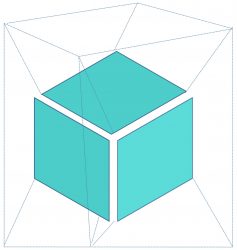Every year there is only one special big event (Lange Nacht der Wissenschaften) to make science more transparent to the population at large. Mostly hidden behind impressive walls and buildings guarded by porters,
science is not as transparent for the large public as it would like to be. In general people are rather intimidated or feel quickly out of place if scientist start to “explain” in lengthy formats their topics, ideas, questions and intermediate solutions. Even if the distributed open science fair is running only from 5 p.m to midnight, there are lots of things to learn and look into.
The website lists 1500+ sessions, 230 are in English language. You have to be selective or spread your interest over several years. I chose to start with, maybe, the toughest choice the Weierstrass-Institute near the Naturkundemuseum. Several projects of applied mathematics and stochastic processes were exposed and explained in more or less transparent and/or understandable form to the audiences. The talk by Julian Kern “Why chance doesn’t happen by chance” had a nice interactive format with “Kahoot-quizzes” and gave a good introduction, why it is useful to understand, statistics and stochastic processes in fields from biology, physics to social phenomena. The White board replaced already the black board and chalk.
The open doors policy, at least one day per year, raises interests and awareness for topics few people would only think that they existed already. The volume “Mathematics and Society” (Wolfgang König ed. 2016) is something I shall follow up on eventually. There are lots of applications of mathematics to social phenomena (time seen from the perspective of generations for example, image below from talk), which we have a hard time to come to grips with without the aid of mathematicians. 




